Anna Schuleit Haber’s exhibit Scientific Purposes (In which a murderous hairdresser donates his head to science, with one restriction) creates a space for people to confront their unique stories, especially their tragedies. She deliberately does not say much about her work to steer viewers to summon their ideas. Continuing with the philosophy and art series, this exhibit connects effortlessly with Aristotle’s notion of catharsis with some additional insight from Camus’ thoughts on the absurd.
At the Abigail Ogilvy Gallery, Schuleit Haber displayed seven mixed media works from an ongoing series. Each are the same size and correspond to the 104 flash fiction stories collected in a volume called The Voice Imitator by Thomas Bernhard—an Austrian writer with whom Schuleit Haber has long been fascinated. The other larger works in this show, also mixed media, were done on stretched linen and exhibit a similarly abstract style. Without being directly linked to fictional writings, the imagery in these works still carry the feeling of an unfolding narrative.
Building on themes from Bernhard’s stories, she explores the mysteriously absurd aspects of life. As layers of translucent and opaque colors form shapes and lines that often overlap one another, her interpretation and expansion of these narratives develops. Schuleit Haber employs oil paint, acrylics, ink, pencil, and oil pastel to construct thick lines and geometric figures in bold color. But this only explains the surface. Drawings of limbs and other recognizable figures push through the abstractions, providing fragments of narrative content that the viewer must complete.
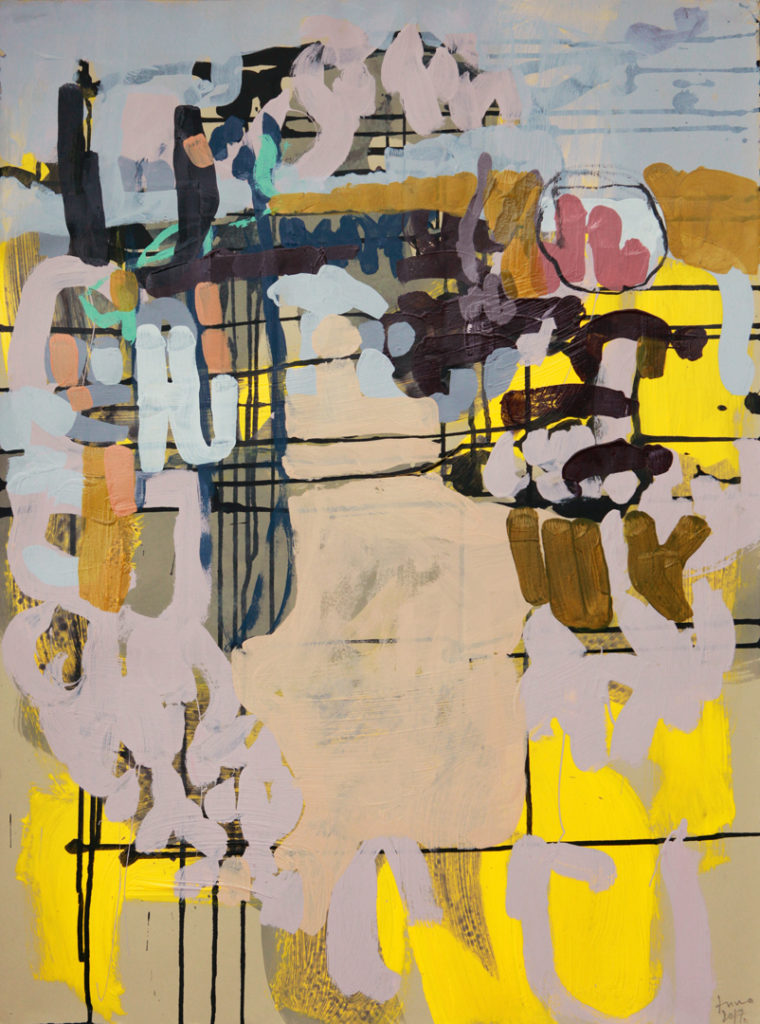
Anna Schuleit Haber, Guilty Conscience. Mixed media on paper, framed. 34 3/4 x 27 in.
By bringing our own narrative structures, we facilitate catharsis, a term that was first introduced by Aristotle. While Aristotle did not have a fully developed theory of art, he began in Poetics to contextualize his ideas of art with tragedy. Aristotle connects tragedy to catharsis, a release of emotion that often results in a changed perspective. In a way, it is a type of purification through education; the person learns to balance tragic emotions with the rest of life, to properly control these strong emotions. Aristotle’s idea of catharsis remains largely under-developed, however, as many of his works were lost. But it still persists as one of his most well-known terms, which influenced later theories of art concerned with empathy and the emotions.
Similar to Plato, Aristotle believed that art is about imitation. While Plato’s theory of mimesis says that art should be an attempt to represent and guide one toward an ideal Reality, Aristotle believed that imitation through art could provide a pathway for a great emotional release, catharsis. Aristotle associated catharsis as a release of pity and fear. When we hear or see works of tragedy, we identify and empathize with the characters and narratives outside of our own experiences. This creates both safe distance and a feeling of solidarity through which we can exorcise our own negative emotions. Aristotle suggested that experiencing tragic emotions through art could transform them into a pleasurable experience for the viewer.
Rather than providing a specific tragic situation for us to consider, such as the death of a child, Schuleit Haber provides a framework for us to experience her works by adapting them to our own memories. Her works encourage a reciprocal relationship between the viewer and the object, creating work whose narrative is mutable to the needs and wants of its audience. This goal is further signified through the fact that her canvases and papers are not fully covered with her marks, stimulating the viewers to pair their experiences with those depicted and suggested through the works of art.
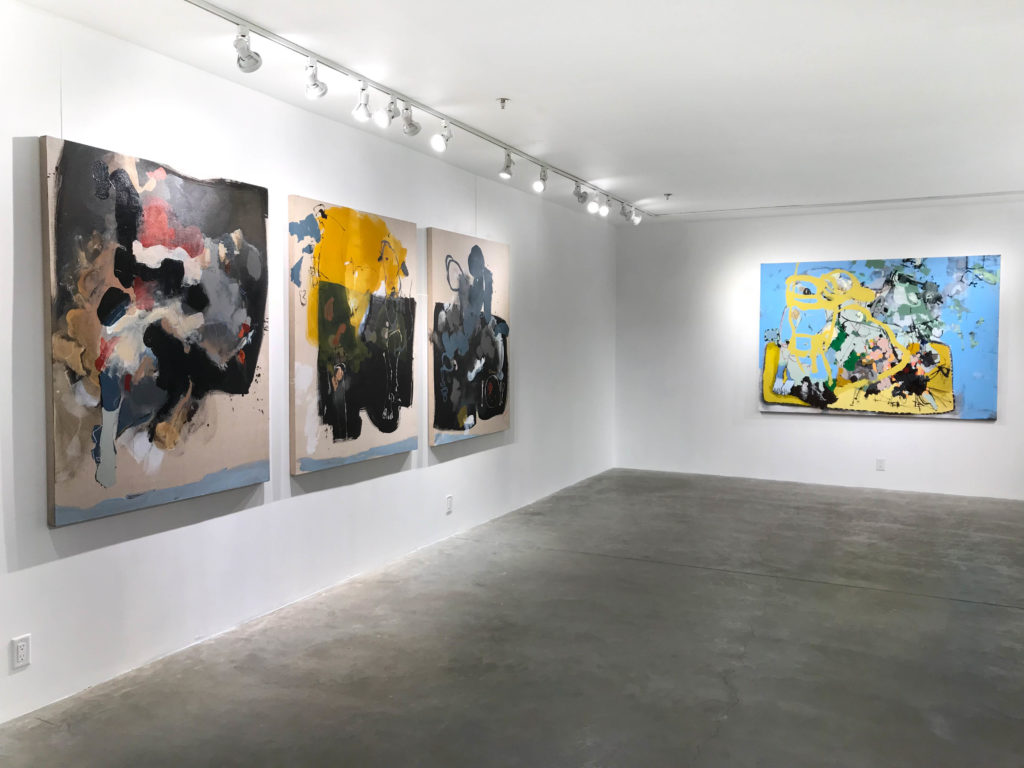
Installation of Scientific Purposes: Anna Schuleit Haber on view at Abigail Ogilvy Gallery.
The experience of tragedy is unique to each person, which is an important observation concerning the absurdity in the world. Albert Camus, sometimes called the philosopher of the absurd, began his exploration The Myth of Sisyphus with this bold statement: “There is but one truly serious philosophical problem, and that is suicide.” [1] The situation might seem bleak, but Camus continuously sought ways to overcome throughout his philosophical ruminations, until his own tragic death in 1960. Art, he suggests, is an important part of opposing the absurd situation, especially because beauty could help us transfigure the absurdity of the world. We strive to pour meaning into our lives, while the world continually tries to thwart our attempts. Art is an act of rebellion in that it tries to bring unity and harmony into a chaotic world.
What connects Schuleit Haber, Aristotle, and Camus? Being alive is an opportunity to experience absurdity. As Camus aptly expresses, “At any streetcorner the feeling of absurdity can strike any man in the face.” [2] At times when life is moving along swimmingly, it is easy to be distracted from this feeling. But we never know when frustration, suffering, and death will spring upon us. Schuleit Haber’s work situates us to mingle with absurdity, reviving a solidarity that counterbalances our emotions through an act of contemplation. We cannot hold our emotions in all the time; we need a reprieve. The catharsis we experience through works of art provides the kind of leisure that helps us cope and change.
While her work may appear to mirror chaos, a closer look reveals a more careful application of paint and other mediums. More importantly, harmony is achieved as viewers interact with her works. The act of rebellion here begins with the imagery by Schuleit Haber, and it is brought to fruition by our wandering minds as we convey our ideas and narratives to her works. The power of the experience culminates in catharsis as the tragedy of her works, Bernhard’s stories, and our narratives interpenetrate one another. In this way, her works are both challenging and highly pleasurable to experience.
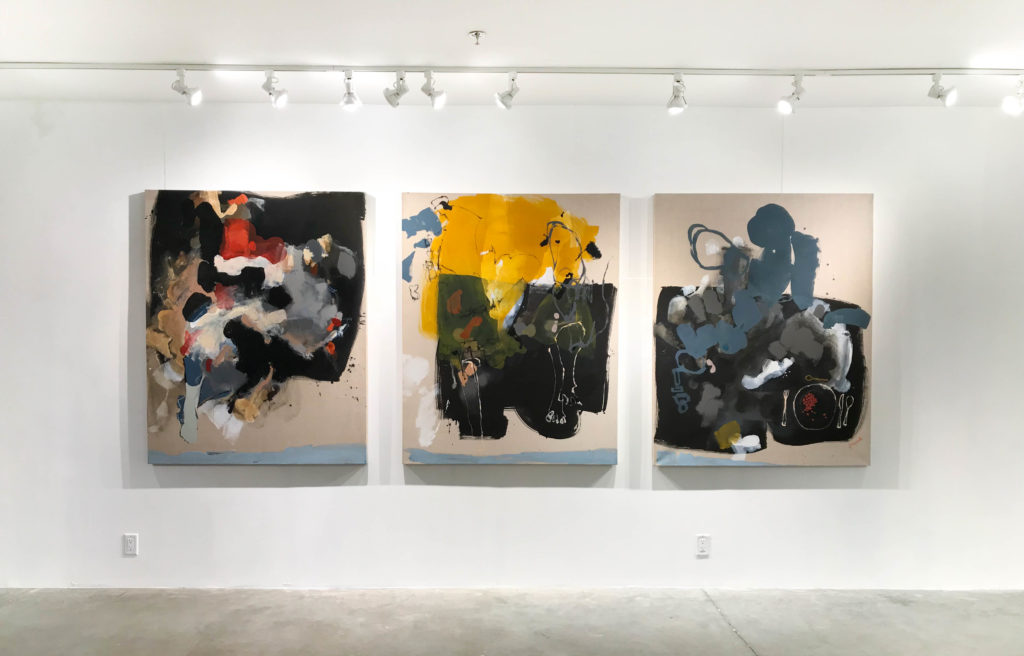
Anna Schuleit Haber. Untitled - Triptych, 2017. Mixed media on Belgian linen, 60 x 144 in.
[1] Albert Camus, The Myth of Sisyphus and Other Essays, translated by Justin O’Brien (New York: Vintage International, 1983), 3.
[2] Ibid., 10-11.

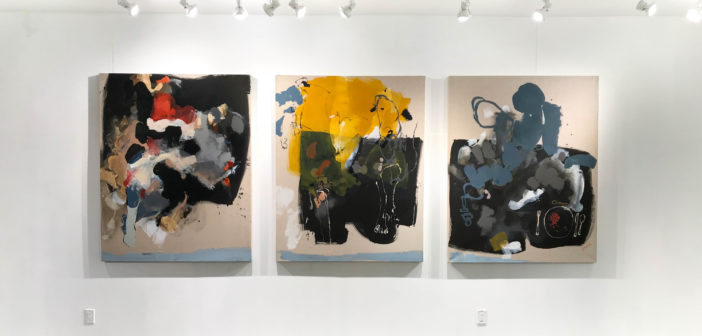

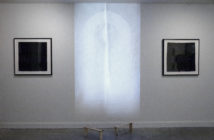

2 Comments
One of the most illuminating reviews I have read in a long time. Total pleasure.
Thank you very much for your kind words!